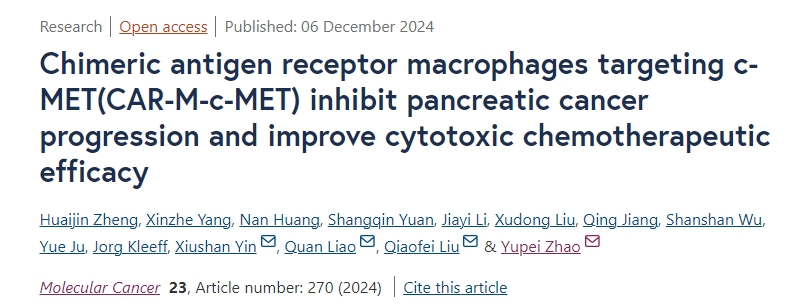预约演示
更新于:2025-05-07

Shenyang University of Chemical Technology
更新于:2025-05-07
概览
标签
消化系统疾病
肿瘤
CAR-M
疾病领域得分
一眼洞穿机构专注的疾病领域
暂无数据
技术平台
公司药物应用最多的技术
暂无数据
靶点
公司最常开发的靶点
暂无数据
| 疾病领域 | 数量 |
|---|---|
| 肿瘤 | 1 |
| 排名前五的药物类型 | 数量 |
|---|---|
| CAR-M | 1 |
| 排名前五的靶点 | 数量 |
|---|---|
| GPC3(磷脂酰肌醇聚糖3) | 1 |
关联
1
项与 沈阳化工大学 相关的药物100 项与 沈阳化工大学 相关的临床结果
登录后查看更多信息
0 项与 沈阳化工大学 相关的专利(医药)
登录后查看更多信息
6,413
项与 沈阳化工大学 相关的文献(医药)2025-09-01·Separation and Purification Technology
Identifying the distinct influences and mechanisms of chelating agents on CoCe bimetallic oxides towards robust toluene purification
作者: Feng, Yang ; Dai, Wei ; Li, Haiyang ; Liu, Shuchen ; Wang, Xinxin ; Song, Zhongxian ; Geng, Jiaxin ; Chen, Xi ; Zhang, Xuejun ; Zhang, Yanyan ; Yu, Huixin ; Liu, Wei
2025-08-01·Dyes and Pigments
Development of aryl 2-pyridinone-fused 2-pyrimidone as a TICT-based turn-off fluorescent probe for ultra-low pH sensing
作者: Jin, Hui ; Zhang, Jinfeng ; Zhu, Chen ; Li, Tianxing ; Zhang, Lixin
2025-08-01·Food Chemistry
Quantification of Cry1Ab protein in genetically modified plants based on immunoaffinity magnetic bead enrichment and high-performance liquid chromatography–tandem mass spectrometry
Article
作者: Su, Chang ; Wu, Liqing ; Zhong, Jianfeng ; Ning, Chengxiang ; Gao, Meijing
2
项与 沈阳化工大学 相关的新闻(医药)2024-12-10
Molecular Cancer|CAR-M治疗胰腺癌成果发布,安全有效!
12月6日,鲲石生物尹秀山教授团队和中国医学科学院北京协和医院刘乔飞主任、廖泉主任、赵玉沛院士团队合作共同在期刊《Molecular Cancer》上发表了研究论文,“Chimeric antigen receptor macrophages targeting c-MET(CAR-M-c-MET) inhibit pancreatic cancer progression and improve cytotoxic chemotherapeutic efficacy” ,鲲石生物为该论文的共同通讯单位,其创始人尹秀山教授与北京协和医院刘乔飞主任、廖泉主任、赵玉沛院士共同担任通讯作者,中国医学科学院北京协和医院博士研究生郑淮今和沈阳化工大学硕士研究生杨鑫哲为共同第一作者。这项研究在体外和体内层面上证实了疗法的高效抗癌作用和安全性,为未来临床试验的开展提供了坚实的科学依据。在这项研究里,科研人员聚焦于c-MET靶向的嵌合抗原受体巨噬细胞(CAR-M)在胰腺癌治疗中的应用。他们观察到c-MET在胰腺癌组织中的表达量显著高于相应的非癌组织,并且这种高表达与患者生存期缩短相关。基于此,研究者们采用人单核细胞系THP-1,开发出了一款针对c-MET的CAR-M细胞(CAR-M-c-MET),改造后的巨噬细胞对胰腺癌细胞展现出高度特异性的识别与结合能力,并在吞噬活性和细胞毒性方面显示出比正常巨噬细胞更强的效果。同时,CAR-M-c-MET细胞与多种化疗药物联合使用,显示出协同增强的抗肿瘤效果。
为了验证CAR-M细胞在体内的效果,研究人员利用NOD/SCID小鼠的胰腺癌模型,腹腔注射CAR-M-c-MET细胞,发现CAR-M-c-MET细胞能够迅速定位到肿瘤区域,并有效控制肿瘤的进展,整个过程中未观察到明显的不良反应。
进一步的细胞因子分析和mRNA测序结果显示,CAR-M-c-MET细胞相较于对照组巨噬细胞,能够产生更高水平的免疫激活因子。这项研究为CAR-M细胞疗法在胰腺癌治疗中的安全性和有效性提供了有力的数据支持,证实了CAR-M-c-MET不仅能够有效抑制胰腺癌的发展,还能提升化疗药物的治疗效果,且安全性良好,未见明显副作用。
结论:在本项研究中,CAR-M-c-MET细胞对于胰腺癌的治疗效果在体外和体内实验中均显示出了安全性与疗效,证实CAR-M-c-MET细胞不仅能有效遏制胰腺癌的发展,还能增强化疗药物的杀伤作用,且在实验小鼠体内未发现明显的毒性反应。胰腺癌在全球范围内是导致癌症死亡的第七大原因,其死亡率与发病率非常接近。胰腺癌的早期诊断率相对较低,不足5%,而且大约有60%的患者在初次就诊时已经发生了转移【1】,2020年全球新增病例数为495,773例,死亡人数为466,003例,五年生存率介于9%到11%之间【2】,对人类健康构成严重威胁。根据中国医学科学院国家癌症中心公布的数据,2022年中国预计新增胰腺癌病例134,374例,死亡病例131,203例,发病率在所有肿瘤中排名第八,死亡率排名第六【3】。尽管胰腺外科手术和细胞毒性化疗方面的进步导致更多患者能够安全地接受手术治疗并改善了生存率,但所有患者的5年总体生存率仍低于10%,即使对于没有淋巴结转移的局部胰腺癌也仅为约40%至45%。此外,对标准的四药联合疗法(Folfirinox)的响应率仅为三分之一左右。迫切需要新的治疗模式来进一步改善这种不良预后和治疗反应。[1] Owens DK, Davidson KW, Krist AH, et al. Screening for Pancreatic Cancer:US Preventive Services Task Force Reaffirmation RecommendationStatement. Jama.2019;322:438-444. doi: 10.1001/jama.2019.10232[2] Siegel RL, Miller KD, Fuchs HE, et al. Cancer statistics, 2022. CA Cancer 」Clin.2022;72:7-33.doi: 10.3322/caac.21708.[3] Xia C, Dong X,Li H, et al. Cancer statistics in China and United States,2022: profiles, trends, and determinants. Chin Med J(Engl). 2022;135:584590.doi: 10.1097/cm9.0000000000002108.
细胞疗法免疫疗法信使RNA基因疗法
2024-12-09
12月6日,中国医学科学院北京协和医院与沈阳化工大学研究人员合作共同在期刊《Molecular Cancer》上发表了研究论文,题为“Chimeric antigen receptor macrophages targeting c-MET(CAR-M-c-MET) inhibit pancreatic cancer progression and improve cytotoxic chemotherapeutic efficacy”,本研究中,研究人员首先研究了靶向c-MET的CAR-M细胞在胰腺癌中的作用。研究人员发现,与配对的癌旁组织相比,c-MET在肿瘤组织中显著高表达,c-MET高表达与较差的患者生存相关。研究人员利用人单核细胞系THP-1和靶向c-MET的hMDM (CAR-M-c-MET)构建了CAR-M细胞。CAR-M-c-MET细胞与胰腺癌细胞具有高度的特异性结合能力,并表现出比促炎极化控制巨噬细胞更强的吞噬和杀伤能力。此外,CAR-M-c-MET细胞与多种细胞毒性化疗药物有协同作用。在NOD/SCID小鼠模型中,腹腔注射CAR-M-c-MET细胞可快速迁移至肿瘤组织并显著抑制肿瘤生长,且未导致明显不良反应。细胞因子阵列和mRNA测序表明,CAR-M-c-MET产生的免疫激活剂水平高于对照巨噬细胞。这项研究为CAR-M治疗胰腺癌的安全性和疗效提供了令人信服的证据。结果表明CAR-M-c-MET显著抑制胰腺癌的进展,并增强细胞毒性化疗的有效性。值得注意的是,没有明显的副作用发生。
12月6日,中国医学科学院北京协和医院与沈阳化工大学研究人员合作共同在期刊《Molecular Cancer》上发表了研究论文,题为“Chimeric antigen receptor macrophages targeting c-MET(CAR-M-c-MET) inhibit pancreatic cancer progression and improve cytotoxic chemotherapeutic efficacy”,本研究中,研究人员首先研究了靶向c-MET的CAR-M细胞在胰腺癌中的作用。研究人员发现,与配对的癌旁组织相比,c-MET在肿瘤组织中显著高表达,c-MET高表达与较差的患者生存相关。研究人员利用人单核细胞系THP-1和靶向c-MET的hMDM (CAR-M-c-MET)构建了CAR-M细胞。CAR-M-c-MET细胞与胰腺癌细胞具有高度的特异性结合能力,并表现出比促炎极化控制巨噬细胞更强的吞噬和杀伤能力。此外,CAR-M-c-MET细胞与多种细胞毒性化疗药物有协同作用。在NOD/SCID小鼠模型中,腹腔注射CAR-M-c-MET细胞可快速迁移至肿瘤组织并显著抑制肿瘤生长,且未导致明显不良反应。细胞因子阵列和mRNA测序表明,CAR-M-c-MET产生的免疫激活剂水平高于对照巨噬细胞。
这项研究为CAR-M治疗胰腺癌的安全性和疗效提供了令人信服的证据。结果表明CAR-M-c-MET显著抑制胰腺癌的进展,并增强细胞毒性化疗的有效性。值得注意的是,没有明显的副作用发生。
https://molecular-cancer.biomedcentral.com/articles/10.1186/s12943-024-02184-8#Sec2
https://molecular-cancer.biomedcentral.com/articles/10.1186/s12943-024-02184-8#Sec2
背景信息
背景信息
01
01
胰腺癌仍然令人生畏,全球发病率在上升。尽管胰腺外科手术和细胞毒性化疗方面的进步导致更多患者能够安全地接受手术治疗并改善了生存率,但所有患者的5年总体生存率仍低于10%,即使对于没有淋巴结转移的局部胰腺癌也仅为约40%至45%。此外,对标准的四药联合疗法(Folfirinox)的响应率仅为三分之一左右。迫切需要新的治疗模式来进一步改善这种不良预后和治疗反应。
胰腺癌仍然令人生畏,全球发病率在上升。尽管胰腺外科手术和细胞毒性化疗方面的进步导致更多患者能够安全地接受手术治疗并改善了生存率,但所有患者的5年总体生存率仍低于10%,即使对于没有淋巴结转移的局部胰腺癌也仅为约40%至45%。此外,对标准的四药联合疗法(Folfirinox)的响应率仅为三分之一左右。迫切需要新的治疗模式来进一步改善这种不良预后和治疗反应。
免疫检查点抑制剂(ICI)和嵌合抗原受体T细胞(CAR-T)是临床免疫疗法的两个里程碑。然而,这两种疗法在胰腺癌中的效果都非常有限。巨噬细胞是胰腺癌组织中最常见的免疫细胞。肿瘤相关巨噬细胞(TAMs)的功能是多方面的。虽然巨噬细胞具有强大的吞噬能力,可以调节免疫反应,但它们也会通过各种炎症过程促进肿瘤进展和化疗耐药性。靶向TAM的免疫疗法在过去十年中备受关注。与CAR-T相比,由于其具有肿瘤浸润能力、吞噬能力和低移植物抗宿主疾病(GVHD)风险,嵌合抗原受体巨噬细胞(CAR-M)在实体肿瘤治疗中具有特定优势。然而,CAR-M在胰腺癌中的作用尚未得到研究。
免疫检查点抑制剂(ICI)和嵌合抗原受体T细胞(CAR-T)是临床免疫疗法的两个里程碑。然而,这两种疗法在胰腺癌中的效果都非常有限。巨噬细胞是胰腺癌组织中最常见的免疫细胞。肿瘤相关巨噬细胞(TAMs)的功能是多方面的。虽然巨噬细胞具有强大的吞噬能力,可以调节免疫反应,但它们也会通过各种炎症过程促进肿瘤进展和化疗耐药性。靶向TAM的免疫疗法在过去十年中备受关注。与CAR-T相比,由于其具有肿瘤浸润能力、吞噬能力和低移植物抗宿主疾病(GVHD)风险,嵌合抗原受体巨噬细胞(CAR-M)在实体肿瘤治疗中具有特定优势。然而,CAR-M在胰腺癌中的作用尚未得到研究。
C-MET是MET家族的酪氨酸激酶受体,其配体为肝细胞生长因子(HGF)。在胰腺癌中,异常激活的HGF/C-MET通过刺激PI3K/AKT、Ras/MAPK、JAK/STAT和Wnt/β-catenin信号通路促进肿瘤的发生和发展。几项体外研究报道,在胰腺癌中抑制C-MET可减少肿瘤的转移并增强化疗的疗效。
C-MET是MET家族的酪氨酸激酶受体,其配体为肝细胞生长因子(HGF)。在胰腺癌中,异常激活的HGF/C-MET通过刺激PI3K/AKT、Ras/MAPK、JAK/STAT和Wnt/β-catenin信号通路促进肿瘤的发生和发展。几项体外研究报道,在胰腺癌中抑制C-MET可减少肿瘤的转移并增强化疗的疗效。
CAR-M-c-MET可提高胰腺癌细胞的化疗细胞毒性效应
CAR-M-c-MET可提高胰腺癌细胞的化疗细胞毒性效应
02
02
研究人员研究了CAR-M疗法与各种化疗药物的联合应用,以探索潜在的协同效应。首先,将BxPC-3 luci+细胞与药物共培养24小时。通过生物荧光信号检测残留的BxPC-3细胞,研究人员发现CAR-THP-1单药治疗与单独的细胞毒性化疗药物的疗效相当。令人惊讶的是,同时给予细胞毒性化疗药物和CAR-THP-1会导致残留肿瘤细胞显著减少。而且,在共培养上清液中LDH水平的量化结果也证实了这些观察结果,进一步支持了联合疗法增强肿瘤细胞杀伤的作用。
研究人员研究了CAR-M疗法与各种化疗药物的联合应用,以探索潜在的协同效应。首先,将BxPC-3 luci+细胞与药物共培养24小时。通过生物荧光信号检测残留的BxPC-3细胞,研究人员发现CAR-THP-1单药治疗与单独的细胞毒性化疗药物的疗效相当。令人惊讶的是,同时给予细胞毒性化疗药物和CAR-THP-1会导致残留肿瘤细胞显著减少。而且,在共培养上清液中LDH水平的量化结果也证实了这些观察结果,进一步支持了联合疗法增强肿瘤细胞杀伤的作用。
与胰腺癌细胞共培养后,CAR-M-c-MET显示出激活的免疫状态
与胰腺癌细胞共培养后,CAR-M-c-MET显示出激活的免疫状态
03
03
为了阐明CAR-M介导的肿瘤细胞杀伤机制以及CAR-M细胞的表型变化,采用了巨噬细胞转录组测序,并对共培养上清液进行了细胞因子微阵列分析。研究显示,CAR-THP-1细胞的GM-CSF分泌量显著升高,而IL-10分泌量则降低,这表明在共培养体系中,CAR-THP-1细胞在遇到肿瘤细胞表面抗原后逐渐向促炎表型转变。相比之下,NC-THP-1细胞缺乏激活信号,倾向于抗炎表型。
为了阐明CAR-M介导的肿瘤细胞杀伤机制以及CAR-M细胞的表型变化,采用了巨噬细胞转录组测序,并对共培养上清液进行了细胞因子微阵列分析。研究显示,CAR-THP-1细胞的GM-CSF分泌量显著升高,而IL-10分泌量则降低,这表明在共培养体系中,CAR-THP-1细胞在遇到肿瘤细胞表面抗原后逐渐向促炎表型转变。相比之下,NC-THP-1细胞缺乏激活信号,倾向于抗炎表型。
研究显示,CAR THP-1和NC THP-1在转录组水平上存在显著差异。转录组分析进一步阐明了CAR THP-1和NC THP-1之间的显著差异,差异表达基因主要富集在细胞内信号转导、基因转录和免疫信号通路中。富集的细胞组分包括免疫突触形成和细胞膜转运,这强调了这些过程在CAR-M介导的肿瘤细胞杀伤中的作用。
研究显示,CAR THP-1和NC THP-1在转录组水平上存在显著差异。转录组分析进一步阐明了CAR THP-1和NC THP-1之间的显著差异,差异表达基因主要富集在细胞内信号转导、基因转录和免疫信号通路中。富集的细胞组分包括免疫突触形成和细胞膜转运,这强调了这些过程在CAR-M介导的肿瘤细胞杀伤中的作用。
此外,研究人员发现,与肿瘤细胞共培养后,CAR THP-1细胞更倾向于表现出促炎表型。
此外,研究人员发现,与肿瘤细胞共培养后,CAR THP-1细胞更倾向于表现出促炎表型。
CAR-M-c-MET可抑制小鼠胰腺癌模型中的肿瘤进展
CAR-M-c-MET可抑制小鼠胰腺癌模型中的肿瘤进展
04
04
为了进一步验证CAR-M疗法的有效性,研究人员在免疫缺陷小鼠中建立了使用BxPC-3 luci+细胞的原位胰腺肿瘤模型。手术后5天,每周一次通过腹腔内注射CAR THP-1细胞,并使用小型动物成像设备每周监测肿瘤负荷。结果显示,接受CAR-THP-1细胞治疗的小鼠生存时间较对照组延长,同时肿瘤负荷显著减少。通过生物荧光成像对肿瘤负荷进行定量分析,也得到了一致的结果。
为了进一步验证CAR-M疗法的有效性,研究人员在免疫缺陷小鼠中建立了使用BxPC-3 luci+细胞的原位胰腺肿瘤模型。手术后5天,每周一次通过腹腔内注射CAR THP-1细胞,并使用小型动物成像设备每周监测肿瘤负荷。结果显示,接受CAR-THP-1细胞治疗的小鼠生存时间较对照组延长,同时肿瘤负荷显著减少。通过生物荧光成像对肿瘤负荷进行定量分析,也得到了一致的结果。
通过对小鼠特定器官切片的HE染色发现,PBS组和NC组THP-1小鼠肝脏中分布有许多微转移灶,而CAR组THP-1小鼠肝脏中未见微转移灶。HE染色和TUNEL染色显示CAR - THP-1组胰腺肿瘤出现较大的坏死区域。包括肺、胃和肠在内的重要器官没有器官损伤的证据。血清肝肾功能、心肌酶、胰腺功能、炎性蛋白、钙磷代谢等指标表明,CAR - THP-1对小鼠重要器官功能无明显影响,安全性可靠。通过体重和旷场实验也证实了CAR - THP-1的安全性。
通过对小鼠特定器官切片的HE染色发现,PBS组和NC组THP-1小鼠肝脏中分布有许多微转移灶,而CAR组THP-1小鼠肝脏中未见微转移灶。HE染色和TUNEL染色显示CAR - THP-1组胰腺肿瘤出现较大的坏死区域。包括肺、胃和肠在内的重要器官没有器官损伤的证据。血清肝肾功能、心肌酶、胰腺功能、炎性蛋白、钙磷代谢等指标表明,CAR - THP-1对小鼠重要器官功能无明显影响,安全性可靠。通过体重和旷场实验也证实了CAR - THP-1的安全性。
而且,与NC THP-1相比,CAR - THP-1显示出特异性的肿瘤内迁移能力。
而且,与NC THP-1相比,CAR - THP-1显示出特异性的肿瘤内迁移能力。
结论
结论
05
05
本研究证明了CAR-M-c-MET在体外和体内模型治疗胰腺癌的安全性和有效性。CAR-M-c-MET细胞具有抑制胰腺癌进展和提高细胞毒性化疗疗效的能力。而且,在小鼠模型中未观察到明显的副作用。(转化医学网360zhyx.com)
本研究证明了CAR-M-c-MET在体外和体内模型治疗胰腺癌的安全性和有效性。CAR-M-c-MET细胞具有抑制胰腺癌进展和提高细胞毒性化疗疗效的能力。而且,在小鼠模型中未观察到明显的副作用。(转化医学网360zhyx.com)
【参考资料】
【参考资料】
https://molecular-cancer.biomedcentral.com/articles/10.1186/s12943-024-02184-8#Sec2
https://molecular-cancer.biomedcentral.com/articles/10.1186/s12943-024-02184-8#Sec2
【关于投稿】
【关于投稿】
转化医学网(360zhyx.com)是转化医学核心门户,旨在推动基础研究、临床诊疗和产业的发展,核心内容涵盖组学、检验、免疫、肿瘤、心血管、糖尿病等。如您有最新的研究内容发表,欢迎联系我们进行免费报道(公众号菜单栏-在线客服联系),我们的理念:内容创造价值,转化铸就未来!
转化医学网(360zhyx.com)是转化医学核心门户,旨在推动基础研究、临床诊疗和产业的发展,核心内容涵盖组学、检验、免疫、肿瘤、心血管、糖尿病等。如您有最新的研究内容发表,欢迎联系我们进行免费报道(公众号菜单栏-在线客服联系),我们的理念:内容创造价值,转化铸就未来!
转化医学网(360zhyx.com)发布的文章旨在介绍前沿医学研究进展,不能作为治疗方案使用;如需获得健康指导,请至正规医院就诊。
转化医学网(360zhyx.com)发布的文章旨在介绍前沿医学研究进展,不能作为治疗方案使用;如需获得健康指导,请至正规医院就诊。

免疫疗法细胞疗法信使RNA临床研究
100 项与 沈阳化工大学 相关的药物交易
登录后查看更多信息
100 项与 沈阳化工大学 相关的转化医学
登录后查看更多信息
组织架构
使用我们的机构树数据加速您的研究。
登录
或

管线布局
2025年12月14日管线快照
管线布局中药物为当前组织机构及其子机构作为药物机构进行统计,早期临床1期并入临床1期,临床1/2期并入临床2期,临床2/3期并入临床3期
临床前
1
登录后查看更多信息
当前项目
| 药物(靶点) | 适应症 | 全球最高研发状态 |
|---|---|---|
Ad5f35-anti-GPC3-CAR ( GPC3 ) | 肝细胞癌 更多 | 临床前 |
登录后查看更多信息
药物交易
使用我们的药物交易数据加速您的研究。
登录
或

转化医学
使用我们的转化医学数据加速您的研究。
登录
或

营收
使用 Synapse 探索超过 36 万个组织的财务状况。
登录
或

科研基金(NIH)
访问超过 200 万项资助和基金信息,以提升您的研究之旅。
登录
或

投资
深入了解从初创企业到成熟企业的最新公司投资动态。
登录
或

融资
发掘融资趋势以验证和推进您的投资机会。
登录
或

生物医药百科问答
全新生物医药AI Agent 覆盖科研全链路,让突破性发现快人一步
立即开始免费试用!
智慧芽新药情报库是智慧芽专为生命科学人士构建的基于AI的创新药情报平台,助您全方位提升您的研发与决策效率。
立即开始数据试用!
智慧芽新药库数据也通过智慧芽数据服务平台,以API或者数据包形式对外开放,助您更加充分利用智慧芽新药情报信息。
生物序列数据库
生物药研发创新
免费使用
化学结构数据库
小分子化药研发创新
免费使用